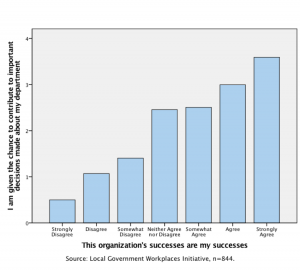 Envision a city where employees know the mission statement by heart. Where citizen satisfaction surveys give employees high marks for delivering high-quality public services. Where employees think of themselves as ambassadors for the city.
Envision a city where employees know the mission statement by heart. Where citizen satisfaction surveys give employees high marks for delivering high-quality public services. Where employees think of themselves as ambassadors for the city.
Now imagine a city where employees go out of their way to warn family and friends from applying for jobs. Where the average ratings on Glassdoor max out at 2.5 on a 5-point scale. Where employees have no clue about the organizational mission and attempt to resolve workplace conflicts through grievance processes that make media headlines.
These are contrasting examples of employee branding, the image that your employees convey about your city or county to the outside world. Unlike organizational branding — the image your city or county strives to cultivate — employee branding can be consistent with the organizational brand. Or not.
In a 2007 article entitled The Employee Brand: Is Yours an All Star?, Sandra Miles and Glynn Mangold identify different types of organizations based on employee branding and relationships:
- All-Stars have employees who know the brand and believe the organization has kept its promises to them;
- Strike-Outs have employees who know the brand, but feel that they organization has not kept its promises.
So how can your local government be All-Star rather than Strike-Out? Here are a few ideas:
Infuse organizational mission and values into everyday work life. This means making your mission and values visible and talking about them constantly. The Town of Chapel Hill models this approach with its values of RESPECT (Responsibility, Equity, Safety, Professionalism, Ethics, Communication and Teamwork). RESPECT is printed on the back of employee IDs, laminated on wallet cards, and regularly discussed and incorporated into decision making across the hierarchy. FYI: Town of Chapel Hill employees and senior managers jointly developed RESPECT.
Do what you say you are going to do. One way to kill your employee brand is to not follow through on promises. This can happen if you conduct a pay study and sit on the results; survey employees with no feedback or follow-up; or communicate important developments to employees at glacial pace. Reverse this trend by prioritizing timely communications and response to employee feedback.
Enlist employees in decision-making and workplace improvements. In the LGWI bar chart below, employees who have input into decision making are more likely to strongly identify with the organization, agreeing with statements like, “This organization’s successes are my successes.” Employee involvement can do wonders for employee branding.
Local governments can be All-Stars. It just takes intentionality and a recognition that employees are its most important ambassadors.


